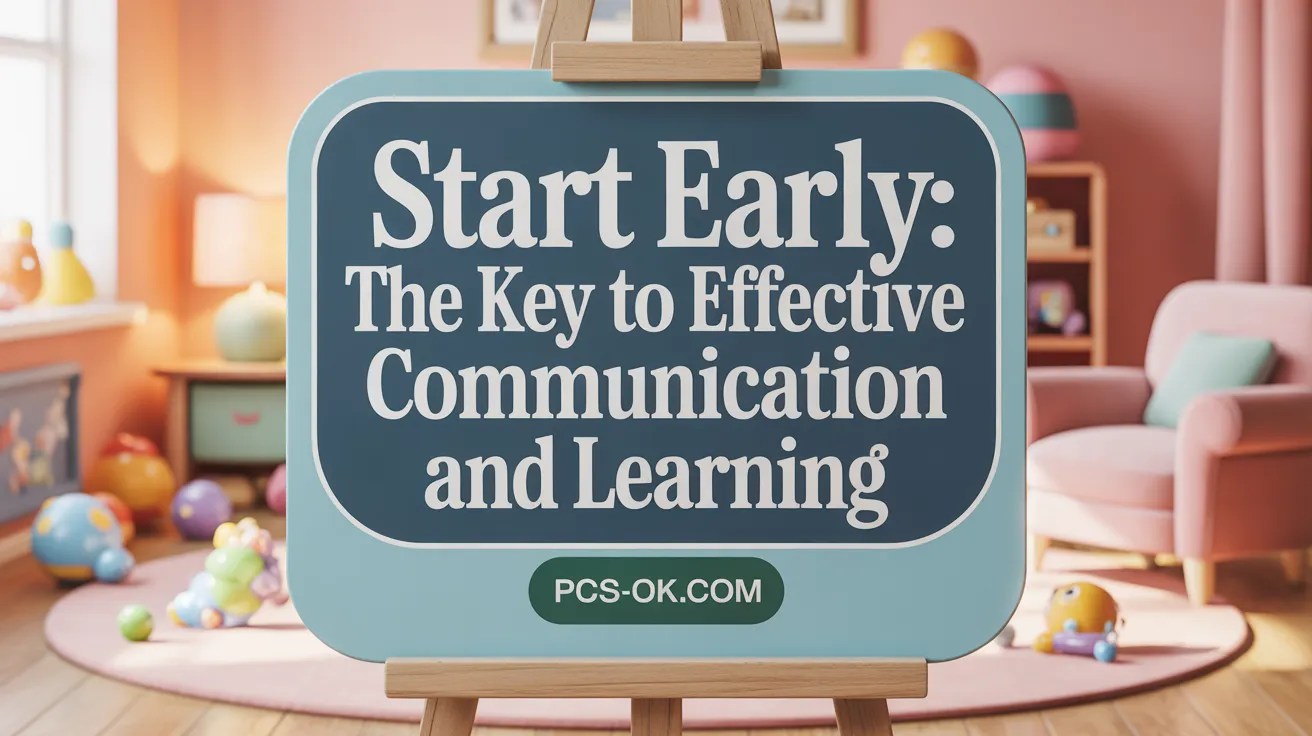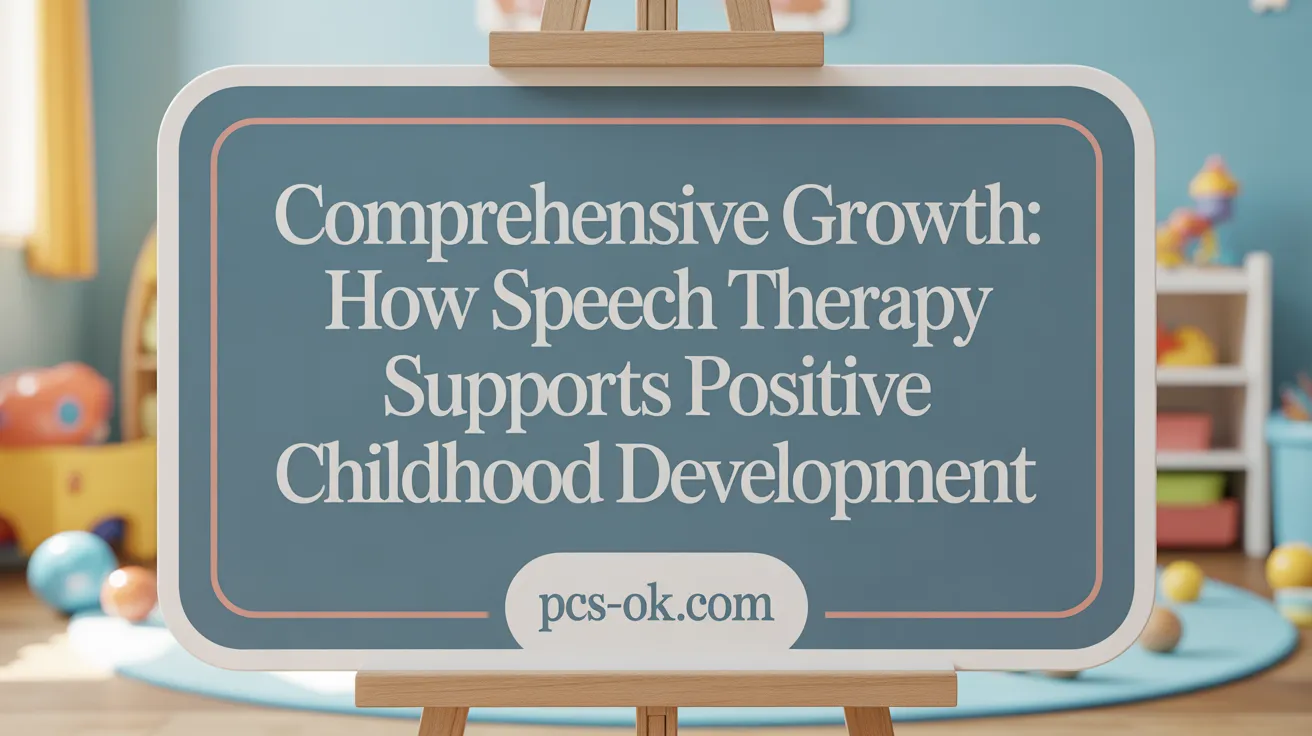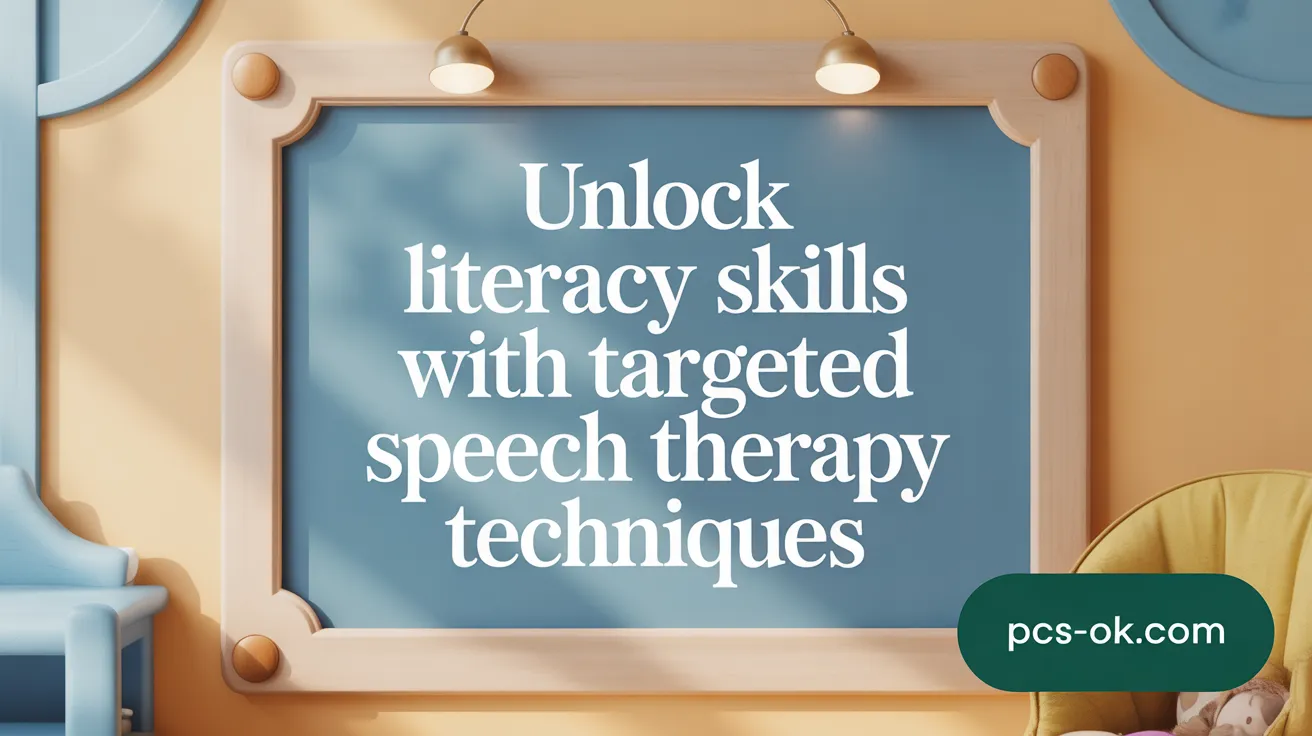The Role of Speech Therapy in Child Development
Understanding the Intersection of Speech Therapy and Child Growth
Speech therapy is a powerful tool in supporting children’s communication and overall developmental progress. This article explores how targeted speech therapy interventions can transform language acquisition, social skills, and cognitive abilities, setting a strong foundation for lifelong success. By recognizing key signs, implementing early intervention, and applying evidence-based techniques, speech therapy plays an essential role in nurturing a child’s development across multiple domains.
Recognizing When Speech Therapy Is Needed: Key Indicators in Children

What are the common signs that indicate a child may need speech therapy?
Parents and caregivers should be attentive to several signs that a child might benefit from speech therapy. These include difficulty pronouncing individual sounds or words clearly, which can lead to unintelligible speech. For example, a child might omit or distort sounds, making it hard for others to understand them.
Another crucial indicator is a delay in achieving developmental language milestones. Typically, by around 10 to 14 months, a child should say their first words, and by age two, children usually combine words to form simple sentences. If a child is significantly behind these benchmarks, it suggests a possible speech or language delay.
Children who have limited vocabulary, use mainly babbling, or produce only one-word sentences beyond age two might need further assessment. Speech that is difficult to understand, persistent stuttering, or other speech disfluencies also signal the need for professional evaluation.
Social and interaction challenges are additional signs that therapy might be beneficial. These include difficulty engaging in conversations, trouble understanding social cues, or frustration when trying to communicate.
Early identification through these signs is vital, as speech therapy can address these issues effectively, improving communication skills, self-esteem, and engagement in social settings.
The Crucial Role of Early Intervention in Speech Therapy

Why is early intervention important in speech therapy and what are its effects on child development?
Early intervention in speech therapy plays a vital role in helping children overcome communication challenges. When speech or language delays are identified early, typically before age three, targeted therapy can begin promptly, helping to address issues before they become more ingrained. This early action prevents potential difficulties in social skills, academic achievement, and self-esteem later in life.
Research shows that starting speech therapy early takes advantage of neuroplasticity — the brain’s remarkable ability to reorganize itself. This flexibility allows young children to build stronger language pathways, develop social skills, and improve cognitive functions essential for overall development.
Family involvement is another crucial aspect. Therapists often work with parents and caregivers, offering strategies and activities to support children’s progress at home. This continuous support within positive social environments promotes faster and more effective learning.
The positive effects extend beyond speech, contributing to better social interactions and emotional well-being. Early therapy can also reduce symptoms of disorders such as autism spectrum disorder, making future learning and peer interaction smoother.
In brief, early intervention in speech therapy not only aids in developing basic communication but also underpins a child’s broader developmental trajectory. It is cost-effective and can dramatically improve outcomes, helping children achieve greater success in school and society.
Enhancing Communication and Language Acquisition Through Speech Therapy
What is the impact of speech therapy on children’s communication skills and language acquisition?
Speech therapy plays a vital role in improving how children understand and use language. It helps diagnose and treat various speech and language difficulties, ensuring children develop essential communication skills early on. When intervention begins during the critical early years, it can significantly enhance both receptive (understanding) and expressive (speaking) abilities.
Early treatment prevents future issues and allows children to reach important developmental milestones, such as expanding their vocabulary and forming sentences. Speech therapists employ a range of techniques to support learning, including creating enriched, language-rich environments, engaging children in structured activities, and utilizing innovative tools like visual aids, word games, and play-based approaches.
An important aspect of successful speech therapy is parental participation. Families are encouraged to reinforce strategies at home, such as describing daily activities or reading aloud, which strengthen the child’s skills. This ongoing support helps children generalize what they learn during therapy sessions to everyday interactions.
Research indicates that speech therapy not only improves immediate communication abilities but also contributes to long-term benefits. Children develop better social skills, increased confidence, and improved literacy skills. Overall, speech therapy fosters a solid foundation for lifelong communication, social participation, and academic success.
Supporting Holistic Child Development Through Speech Therapy

How does speech therapy support overall child developmental progress?
Speech therapy goes beyond just improving a child’s ability to talk. It plays a significant role in supporting various aspects of a child’s overall development.
First, effective communication skills are crucial for children to express their thoughts, needs, and feelings. Speech therapy helps children build confidence in their speech and language abilities, which directly boosts their self-esteem and emotional well-being.
Additionally, early intervention with speech-language therapy can prevent secondary issues such as social isolation or difficulties in learning. When children develop strong communication skills early on, they are better equipped to interact with peers, participate in group activities, and understand instructions.
Therapists often use engaging, play-based methods tailored to each child’s needs. These activities enhance not only speech and language but also social skills and emotional regulation. For example, children may practice turn-taking during games, which promotes patience and sharing.
Furthermore, speech therapy targets specific areas like vocabulary, fluency, and comprehension. Improvements in these areas contribute to better academic performance and help children navigate daily social interactions smoothly.
In summary, speech therapy supports the child’s overall development by fostering language, social, emotional, and cognitive growth. It helps children reach critical developmental milestones, paving the way for successful academic and social lives.
Speech Therapy and Developmental Milestones: A Timely Intervention
How does speech therapy relate to developmental milestones in children?
Speech therapy plays a crucial role in helping children meet vital developmental milestones related to communication, social skills, and cognitive development. The first three years of life are especially important, as this is when the brain is most receptive to learning language—a period often called the critical window for speech and language acquisition.
During this time, children typically recognize important sounds by about 6 months and begin to develop words and begin combining them around age 2. Speech-language pathologists assess if children meet these stages and intervene early if delays or disorders are suspected. These professionals evaluate issues like speech delays, articulation problems, or developmental language disorder, providing targeted therapy to support each child’s unique needs.
Early intervention through speech therapy can prevent future challenges such as reading difficulties, behavioral issues, and social struggles. It is not just about speech sounds but also involves fostering social communication skills, comprehension, and cognitive abilities.
Monitoring developmental milestones, involving caregivers in regular interactions, and providing a stimulating environment are essential strategies alongside professional therapy. Together, these efforts ensure children develop the language and communication skills necessary for success in school and beyond.
Critical periods for language acquisition
There are specific times when the brain is most open to learning language—these are called critical periods. For example, early exposure to sounds, words, and social interaction during the first few years significantly impacts lifelong communication ability.
Delays during these windows—if unaddressed with therapies like speech-language intervention—can make acquiring language more difficult later on. Recognizing and supporting children during these periods through targeted activities and therapy can optimize developmental outcomes.
Monitoring developmental milestones
Parents and caregivers should be aware of milestones such as a 50-word vocabulary by age 2 or using two-word combinations. Screening tools and regular developmental surveillance help identify children who may need speech therapy services. Early detection allows for prompt intervention, which has been shown to improve language skills and prevent secondary issues.
Preventing delays through targeted therapy
Prevention involves creating rich language environments—speaking often to children, describing activities, reading books, and limiting screen time. These strategies are supported by research indicating that active engagement and social interaction are fundamental for language learning.
When delays are detected, speech therapy tailored to individual needs—using activities like play-based exercises, word games, and visual aids—can enhance communication skills. The goal is to support children in reaching age-appropriate language levels, thereby setting a strong foundation for future learning and social success.
The Role of Speech-Language Pathologists in Child Development
Assessment and diagnosis techniques
Speech-language pathologists (SLPs) use a variety of assessment methods to evaluate a child’s communication abilities. These include spoken tests, observational assessments, and hearing evaluations to identify speech, language, or cognitive-communication issues. Understanding developmental milestones—such as a 2-year-old’s vocabulary of about 50 words or their ability to combine words—is essential for detecting delays or disorders early. Standardized screening tools help pinpoint areas needing intervention, setting the stage for tailored therapy plans. Early and accurate diagnosis allows for timely intervention, which research shows significantly improves communication outcomes.
Individualized intervention planning
Once assessment results are obtained, SLPs design personalized treatment programs that cater to each child’s unique needs. These interventions often incorporate play-based activities, visual aids, structured practice, and language games. For example, children with articulation issues might practice tongue and mouth exercises, while those with receptive language delays might engage in reading aloud and sequencing activities. The goal is to stimulate effective learning episodes, encourage active engagement, and facilitate naturalistic interactions within familiar settings, such as home or school. Therapy duration varies based on severity, age, and underlying health conditions, but early and consistent intervention tends to yield the best results.
Collaboration with families and educators
SLPs recognize the importance of partnering with families and educators to maximize a child’s communication development. They provide guidance on everyday language-rich activities like describing daily routines, reading books, and limiting screen time—strategies supported by theories emphasizing social context and active engagement in learning. They also train parents and teachers on effective communication strategies, behavioral cues, and simple exercises to reinforce skills outside therapy sessions. These collaborative efforts ensure consistency and support for the child’s progress, enhancing their social interactions, academic readiness, and overall confidence.
| Aspect | Description | Additional Details |
|---|---|---|
| Assessment Techniques | Speech tests, observation, hearing screening | Detect delays or disorders early |
| Intervention Strategies | Play-based activities, visual aids, structured practice | Tailored to individual communication needs |
| Collaboration | Parent and teacher involvement, training, resource sharing | Supports consistent development |
| Communication Goals | Improve expressive/receptive language, enhance social skills | Foster confidence, independence, and academic success |
Addressing Speech and Language Disorders: Therapy Techniques and Outcomes

How are speech and language disorders addressed through therapy, and what developmental outcomes can be expected?
Speech and language disorders are typically managed through personalized behavioral interventions that target specific areas like vocabulary, sentence structure, pragmatics (social language use), and literacy skills. These therapies are usually led by trained speech-language pathologists (SLPs), who design tailored treatment plans based on each child’s unique needs.
Early intervention is crucial, especially for children under three years old, because it incorporates family-centered and naturalistic strategies. These approaches integrate therapy activities into everyday routines, such as play, reading, and daily interactions, facilitating more meaningful and consistent practice.
Common techniques include play-based activities, visual aids, structured practice, sequence exercises, and language games. These methods encourage active participation, reinforce correct speech patterns, and help develop comprehension and expressive skills.
For children with more severe or persistent speech and language challenges, augmentative and alternative communication systems may be introduced. These can include communication boards, sign language, or speech-generating devices. Although these tools support functional communication, they typically do not replace the development of natural speech.
The expected developmental outcomes depend on various factors like initial severity, age at intervention, parental involvement, and consistency of therapy. Many children experience significant gains in communication abilities, which support better social interactions, academic performance, and self-esteem. However, moderate to severe cases might continue to face challenges into adolescence and adulthood.
Long-term improvement hinges on early detection, ongoing assessment, and personalized strategies that promote not only speech and language skills but also overall social and emotional well-being.
| Aspect | Approach | Expected Outcomes | Additional Notes |
|---|---|---|---|
| Behavioral Interventions | Tailored activities by SLPs | Improved vocabulary, syntax, social language | Often combined with family participation |
| Family-Centered Strategies | Embedding therapy into daily routines | Better generalization and quicker progress | Emphasizes active parent involvement |
| Augmentative Communication | Devices and systems | Facilitates functional communication | Supports not always restoring natural speech |
| Long-Term Development | Continuous monitoring | Enhanced social-emotional skills and academic success | Varies with severity and intervention timing |
Effective speech therapy can greatly enhance a child’s ability to communicate, learn, and interact socially, laying a foundation for healthier development and greater independence.
Promoting Literacy and Language Skills Through Speech Therapy

What techniques are used in speech therapy to promote literacy and language skills, and what benefits do they provide?
Speech therapy utilizes a variety of engaging methods aimed at strengthening both literacy and communication abilities. Common techniques include articulation exercises, which help children produce sounds correctly, and phonological awareness activities, such as rhyming games and sound segmentation, that are crucial for decoding words.
Language modeling and structured reading sessions are also key strategies. These activities involve the therapist demonstrating proper language use, encouraging children to imitate, and participating in shared reading to develop vocabulary and comprehension. Interactive activities like word games, visual aids, and storytelling promote expressive language, allowing children to practice forming sentences and expressing ideas.
By connecting sounds to their meanings and developing phonemic awareness, children improve their ability to decode words and understand written language. Activities that involve rhyming, sequencing, and expanding on children’s speech foster receptive language skills, enabling them to understand and interpret spoken and written information more effectively.
These techniques collectively support literacy development and are linked with benefits such as better vocabulary growth, improved decoding skills, increased reading fluency, and enhanced comprehension. They lay a strong foundation for academic success, especially during the critical early years of development.
Integrating literacy and language strategies in speech therapy not only addresses current communication challenges but also promotes long-term educational achievement. The tailored, play-based nature of these interventions encourages active engagement, making learning both effective and enjoyable for children. Ultimately, these methods foster a solid base for lifelong communication, learning, and social integration.
The Essential Contribution of Speech Therapy to Child Development
Speech therapy is a cornerstone in supporting children’s communication and overall developmental growth. Through early identification, personalized interventions, and collaboration with families, speech-language pathologists help children overcome speech and language challenges, enabling them to achieve vital developmental milestones. The techniques and evidence-based practices embedded in speech therapy not only improve immediate communication skills but also foster lifelong cognitive, social, and academic success. Recognizing the signs that indicate a need for therapy and intervening early ensures children receive the support they need to unlock their full potential in language, learning, and social interaction.
References
- Speech Therapy: What It Is & How It Works
- How young children learn language and speech
- 7 Signs Your Child May Benefit from Speech Therapy
- Speech Therapy for Children: What are the Benefits?
- The Role of Speech Therapy in Childhood Development
- Speech and Language Developmental Milestones
- 7 Signs Your Child May Benefit from Speech Therapy
- Signs Your Child Should See A Speech Therapist
- How to Know if Your Child Needs a Speech Evaluation
- 5 Warning Signs Speech Therapy for Your Toddler is Needed
